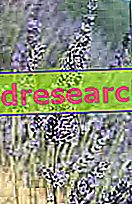Definition
Perioral dermatitis is an erythematous and papulo-pustular facial eruption, similar to acne and / or rosacea, which typically begins around the mouth.
The causes are still unknown, however numerous hypotheses have been proposed at the basis of the disorder. Among the most accredited factors, there is the application of topical corticosteroids (creams, ointments and gels) and / or the use of fluoride toothpastes.
In etiology, moreover, hormonal imbalances could occur (some women experience strong eruptions before the appearance of menstrual flow), the presence of various types of infectious agents (eg Bacillus fusiformis, Demodex folliculorum and Candida albicans ), intestinal disorders (eg malabsorption of various nature and positivity for Helicobacter pylori ), particular climatic factors (exposure to wind or ultraviolet light), stress and mood swings.
Potential risk factors also include the use of the contraceptive pill and the use of cosmetic products or detergents of poor quality and / or containing irritants, such as sodium lauryl sulfate (SLS), isopropyl myristate, vaseline and paraffin.
Perioral dermatitis mainly affects women of childbearing age (with a peak incidence between 30 and 40) and children.
Most common symptoms and signs *
- Redness of the face
- Burning in the mouth
- Facial pain
- Erythema
- papules
- Dry skin
- itch
- Pustules
- Squeal
- blisters
Further indications
Perioral dermatitis typically begins with an eruption of erythematous papules at the level of the nasolabial folds, then extends around the mouth, sparing the area around the vermilion of the lips (ie the lip contour). Less often, the rash consists of pustules and papulo-vesicles (lesions with serous or purulent contents).
In the area of the chin, of the nose-genius furrows and of the labial filter (between the upper lip and the nose), reddish spots can appear, with sharp, dehydrated and finely desquamating borders, which cause burning, itching or tenderness sensations. The surrounding skin may be red and dry. Sometimes, the rash can also spread to the forehead, to the cheekbones and in the periorbital region.
Topical corticosteroids worsen the symptoms of perioral dermatitis, as well as perioral contact with hot or cold foods; direct exposure to the sun, wind and low temperatures can cause discomfort. Infections can complicate this picture.
The diagnosis is based on the appearance of the rash; perioral dermatitis differs from acne in the absence of comedones and from rosacea due to the lack of lesions around the mouth and eyes. The differential diagnosis should exclude seborrheic and contact dermatitis.
Perioral dermatitis is usually difficult to treat and often requires several months of treatment.
Treatment involves discontinuing the use of topical corticosteroids and fluorinated dental products due to their irritant capacity. The therapy consists of the administration of topical antibiotics (such as erythromycin or metronidazole) or tetracycline orally (note: the reasons for the efficacy of antibiotic therapy are not clear, given the absence of evidence to show the presence of an infection).
On the other hand, particularly resistant cases can be resolved with isotretinoin.



